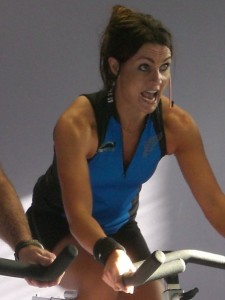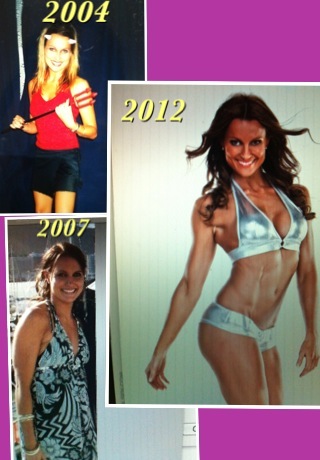I took this article off the Simply shredded website and wanted to share it as it explains in detail a lot of what I get asked in regards to which cardio is best for them and why they need to do it.. It is a big read but definitely worth it.

Why is it that cardio is always the hot topic of fitness discussion and seems to be the fix all solution to burning fat?
As we have all learned and I have written about in the past that cardio is not the fix all solution when it comes to body compositional changes anymore. New times have rolled in and we have tons of research studies proving that weight lifting is far more superior for fat loss and body compositional changes. But, even though we have these new findings, people still don’t get it and people still want to sit on the bikes reading magazines about Kim Kardashian’s divorce for hours and hours. Do as you please, but I know I’m one of those types of people that want to get the most bang for their buck when it comes to training. This leads me to write about what is the right type of cardio for you?
I will be doing a comparison on HIIT cardio vs LISS cardio, since these two forms of cardio are used the most. By the end of this article you will have a really good idea of what kind of cardio is right for you and how to effectively use it.
What in the world do these crazy acronyms HIIT and LISS mean?
HIIT stands for High intensity interval training, which consists of short sprint intervals coupled with low-moderate intensity work. An example of this would be a 30 second sprint followed by a 4 minute steady pace walk to cool down and bring your heart rate back to normal and then repeating it. LISS stands for Low intensity steady state cardio, which consists of purely low-moderate intensity work. An example of this would be walking on the treadmill or riding the bike and being able to hold a conversation (we tend to see a lot of this at gyms).
Now that you have a basic understanding of the two forms, let’s dive into some more detailed stuff.
LT & AD
Why testing the lactate threshold (LT) and anaerobic threshold (AT) is a good idea? The AT and LT are extremely powerful predictors of performance in aerobic exercise (cardio). There are 2 ways that muscle can burn glucose (blood sugars) and that is through aerobic work (with air) and anaerobic work (without air). For example, long bouts of LISS cardio is considered aerobic work and weight training or HIIT cardio
How can you change your metabolism?
(1) If you want to change your metabolism, you have to increase muscle mass and increase your muscle’s oxidative capacity. Your muscles have these energy producing units called ‘mitochondria’ and this is where ATP are made and fats are burned.
The more mitochondria you have and the more active they are the greater oxidative capacity you will have for fat loss. HIIT increases mitochondrial capacity and you actually increase the amount of mitochondria you produce. Studies show that you get greater fat loss through high intensity training because of the increase in oxidative capacity. Whereas with LISS you’re only burning calories at that precise moment, there’s no 24 hour energy expenditure (boost in metabolism) and it hurts you down the line because your body adjusts to it and you end up needing more to lose fat. With HIIT you are burning calories at the moment but you actually change the muscles metabolism and it boosts your metabolism because you increase the mitochondria density of your muscle, so you increase the muscles oxidative capacity and you really do burn more calories. What most people don’t realize is you have to put your body in an uncomfortable mode and use the max energy expenditure.
It’s supposed to hurt when you’re doing HIIT and if it’s hurting, you’re in an uncomfortable mode and that means you’re doing it right.

(2)We tend to see a lot of people doing hours and hours a week of LISS and according to calculations they should be losing pounds, but they can’t lose anything because your metabolism adjusts to low intensity exercise. It just doesn’t cut it because it’s just a calorie burn at that time, not 24 hour energy expenditure. If you do LISS all the time, you’re basically trading calories in and calories out and you can cut these same calories through diet and still get the same effects.
Ex: You burn 200 calories over 30 min of LISS, you can cut out 200 calories through carbs or fat and get the same effect as opposed to getting a 24 hour energy expenditure through HIIT cardio.
Research
(3) A study conducted by Wilson et al. From the University of Tampa, FL, shows when you add in LISS you get a temporary boost in weight loss. Subjects lost a couple of pounds the first week and after that they lost nothing. This happened because their metabolism completely adjusted to that and that became their new set point to what they had to do just to maintain. LISS with a low calorie diet is terrible for fat loss and could cause muscle loss. During a low calorie diet, LISS cardio is more catabolic (muscle wasting) towards muscle as opposed to HIIT cardio being much more muscle sparing.
The reason being that your metabolism gets so adjusted to LISS and you constantly have to do more and more and people don’t understand when you are on a low calorie diet, it usually ends up being low carb, so once you are glycogen depleted (stored carbs in muscle), your body is going to look for energy to rely on and guess what it goes after? Protein! Once it goes after protein, then you start to see catabolism (muscle wasting).
(4) In the same study by Wilson et al. It showed that LISS caused more muscle loss than HIIT. HIIT caused more muscle retention because when you’re doing LISS (say fast paced walking) you’re not activating muscles the same way as if you were lifting weights. So when you sprint you have hip flexion, knee extension, and these are all weightlifting movements. HIIT is another way to overload the muscle. Just compare a sprinters body composition to marathon runners, more muscle mass!
So, it’s really hard to argue with this study because the point about HIIT activating hip and knee movements. Hip flexion and knee extension are the same movements when doing leg workouts. Also, by doing high intensity work you are activating muscle fibers and anytime you activate muscle fibers you are primed for growth. LISS unfortunately can’t stimulate muscle fibers the same way.
(5) In another study done by Naito et al. From Juntendo University in Japan, found that in rats, the enhancement of satellite cell pool caused by endurance training is influenced not by the duration but by the intensity of the exercise.
So, I know most of you are saying well that was done in rats, but rats are very good models for protein synthesis (making of new proteins in muscle tissue) & metabolism because they have similar responses to amino acids and their metabolism. Also, for those that don’t know about satellite cells, increasing the number of satellite cells is necessary in humans because it leads to makings of new muscle fibers and the more muscle fibers you have, the more muscle growth occurs. So, what’s interesting about this finding in this study is that when the rats performed HIIT, they got muscle stimulation and that’s because HIIT overloads the muscle. When the rats performed LISS, there was no activation in satellite cell pool.
So, it shows that when it comes to cardio, the intensity matters more over the duration.
LISS
Now I know a lot of you have gotten the hint as to why HIIT cardio is more advantageous to LISS cardio for muscle retention and fat loss and it seems as if I totally bashed LISS cardio to the ground.
But, keep in mind that this doesn’t mean that LISS is useless. I’m a big believer in doing both HIIT and LISS combined. Here are the following reasons why:
You can’t do HIIT 5-6 days a week because eventually it will have a negative impact on your weight training and interfere with growth
Many people have legitimate orthopedic, cardiac, and even psychological reasons to avoid HIIT, so LISS is their only option
HIIT could be dangerous if not used right and could lead to injury
HIIT and LISS on either a combined, cyclical, or rotational basis seems to be the best formula in my opinion
So to sit there and say that HIIT is hands down more superior than LISS for improvement in body composition is as bad as saying that 6 reps per set is better than 20. I’m a firm believer that both HIIT and LISS cardio have unique benefits unto themselves. I feel they both should be incorporated into your routines since each have specifically different effects.
The Bottom Line
Do the type of cardio that you have a personal preference for. Whichever one fires you up the most because you’ll most likely work harder at it. HIIT is quicker, proves to be more effective for fat loss, creates metabolic changes, and helps with muscle retention but not everybody can do HIIT. LISS is safer, but takes twice as long to accomplish similar things and it still has its place for fat loss in moderate amounts, from a pure calorie burning standpoint (meaning only to burn calories & not make changes to your metabolism). My intentions weren’t to favor one form of cardio and bash the other, even though it sounded like that. My intent was to educate and notify you that times have changed and science is proving some good stuff with HIIT cardio. But at the end of the day it’s up to you on what kind of cardio suits you best.
Hopefully, after reading this article you should have a really good idea of what kind of cardio is right for you and how to effectively use it.
Author: Chris Martinez
References:
(1, 2) Layne E. Norton
(3, 4) Wilson, et al. Concurrent Training: A Meta Analysis Examining Interference of Aerobic and Resistance Exercise. University of Tampa, FL. J Strength Conditioning.
(5) Naito, et al. Satellite cell pool enhancement in rat plantaris muscle by endurance training depends on intensity rather than duration. Juntendo University, Japan. Acta Physiologica. 2011 Oct.
link http://www.simplyshredded.com/cardio-for-fat-loss-high-intensity-interval-training-cardio-vs-low-intensity-steady-state-cardio.html









